ExpressRoute readiness checklist
As part of determining whether you're ready to implement ExpressRoute for Microsoft Power Platform, you need to validate the following scenarios.
Client routing
Using ExpressRoute for Microsoft Power Platform and Microsoft 365 requires routing traffic from the client via the ExpressRoute circuit rather than via the internet. This is typically done through proxy setup. Verify the following:
Have you confirmed how client connectivity will be configured to make sure that appropriate traffic will be routed via the ExpressRoute circuit?
Are clients able to connect via the internet for non-private resources, for example Azure Content Delivery Network?
Has the client been configured to use a proxy to route traffic to the ExpressRoute subnet rather than across the internet?
Are the clients connecting from a public IP address or are they hidden behind network address translation (NAT)?
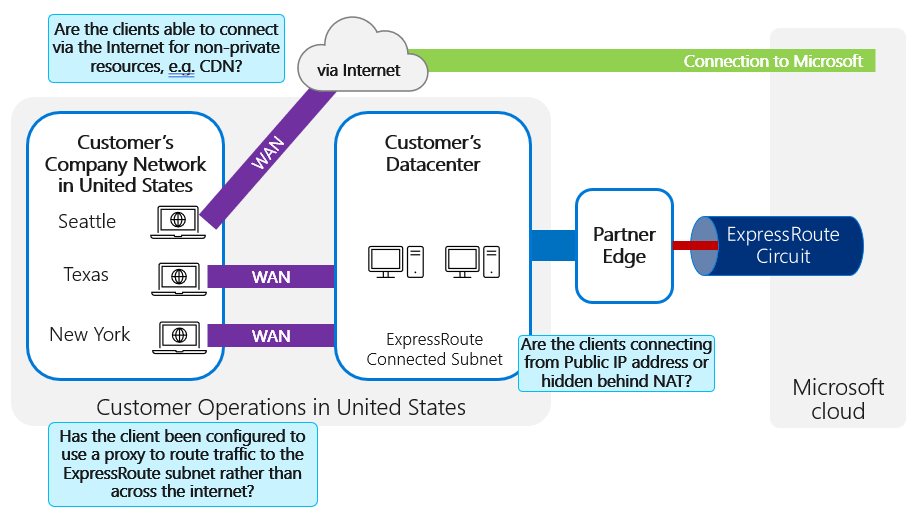
WAN performance
When using ExpressRoute, the performance from a client will only be as good as the slowest link on the connection. Because most clients will be connected to the ExpressRoute circuit via a wide-area network (WAN), the capacity and speed of the WAN connection is critical.
- Will the capacity and speed of the WAN connection be sufficient for the traffic you'll require?
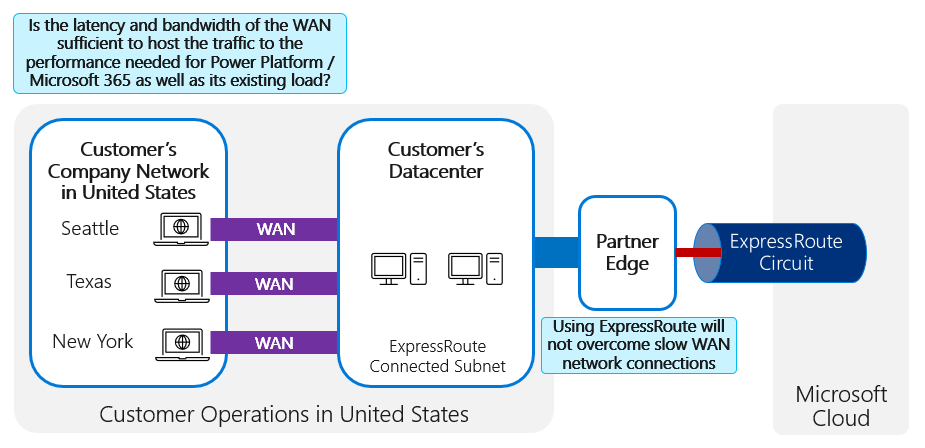
Peering
Microsoft Power Platform uses Microsoft peering.
- Has the appropriate Microsoft peering been configured for your needs?
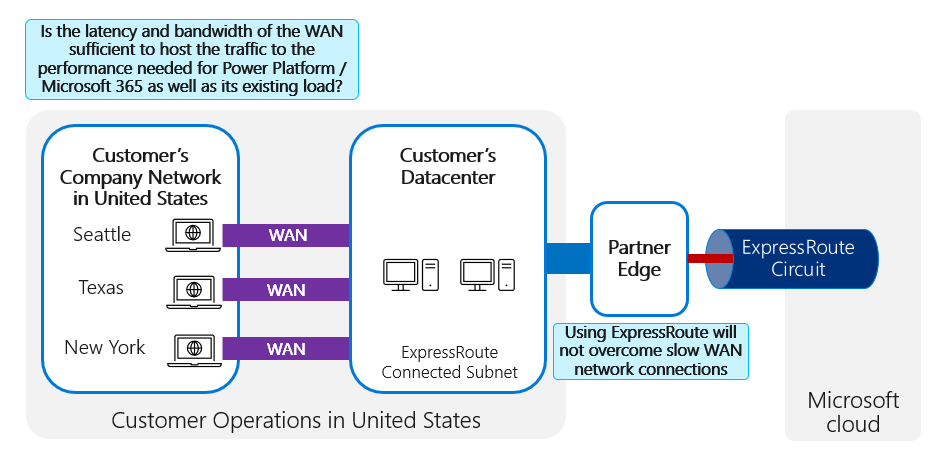
Asymmetric routing
- Have you configured the network and ExpressRoute to ensure that you avoid asymmetric routing?
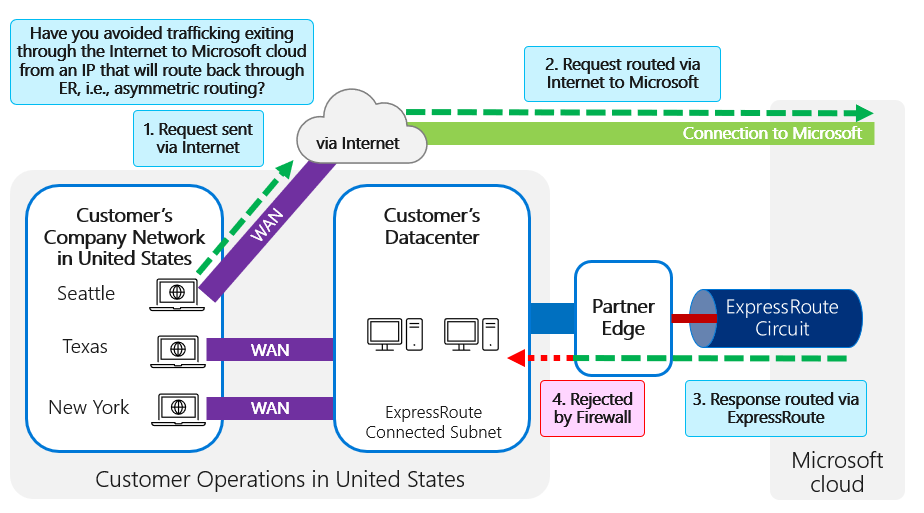
The diagram shows that a network request to Microsoft is made where the traffic is routed to travel via the public internet. After the request reaches Microsoft and the response is generated, the response is routed via ExpressRoute due to the incorrect configuration of the routing. Because the original request comes via the internet, the customer's firewall rejects the incoming response traffic, failing to complete the standard request and response.
Geographical distribution
If a geographically distributed user base is to be served, has this been considered in the ExpressRoute circuit connectivity?
Should multiple circuits be distributed geographically for different areas or regions?
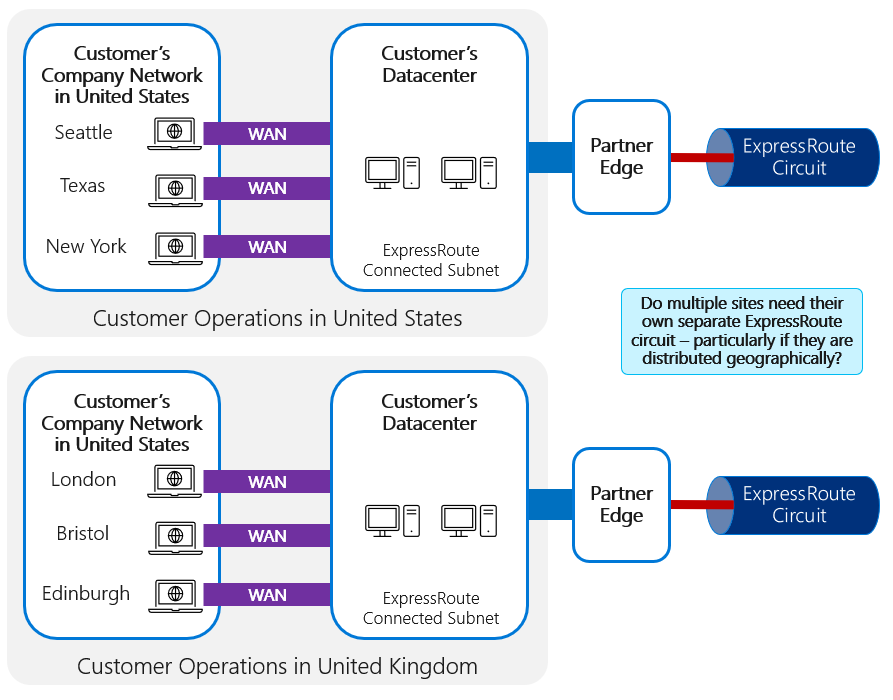
On-premises integration
- Are connections back into the on-premises network from the Microsoft cloud across ExpressRoute protected (that is, are they validated as if they came from the public internet)?
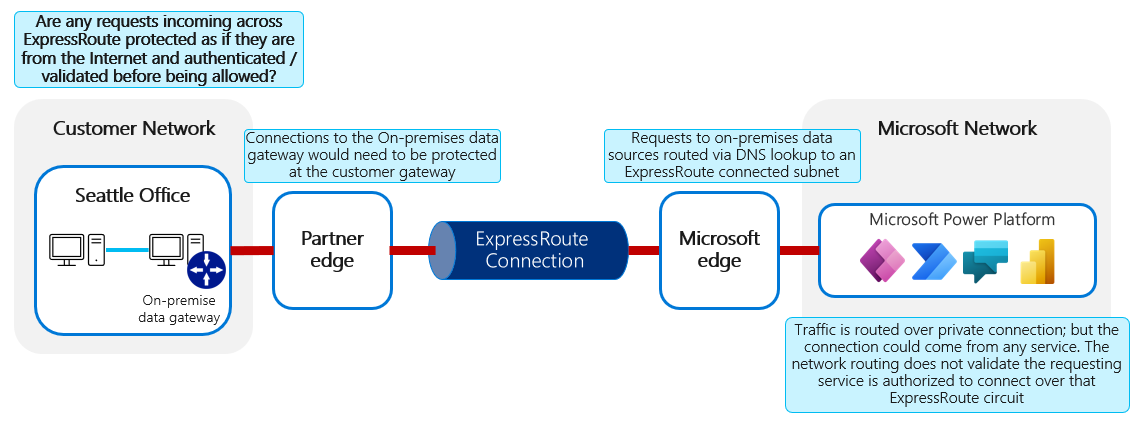
Feedback
Coming soon: Throughout 2024 we will be phasing out GitHub Issues as the feedback mechanism for content and replacing it with a new feedback system. For more information see: https://aka.ms/ContentUserFeedback.
Submit and view feedback for